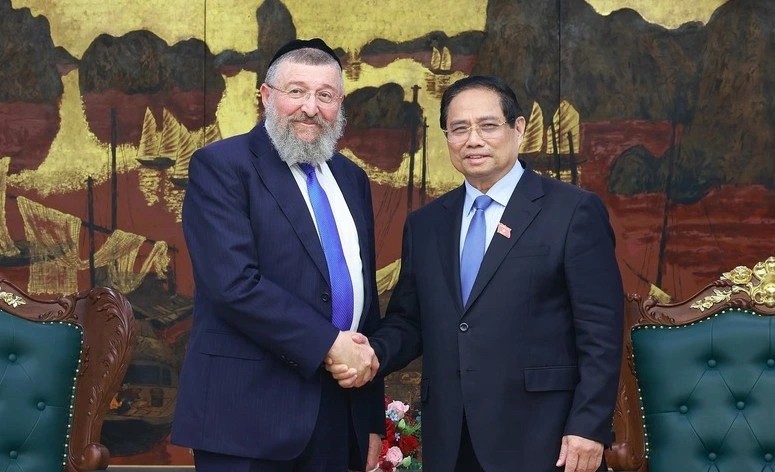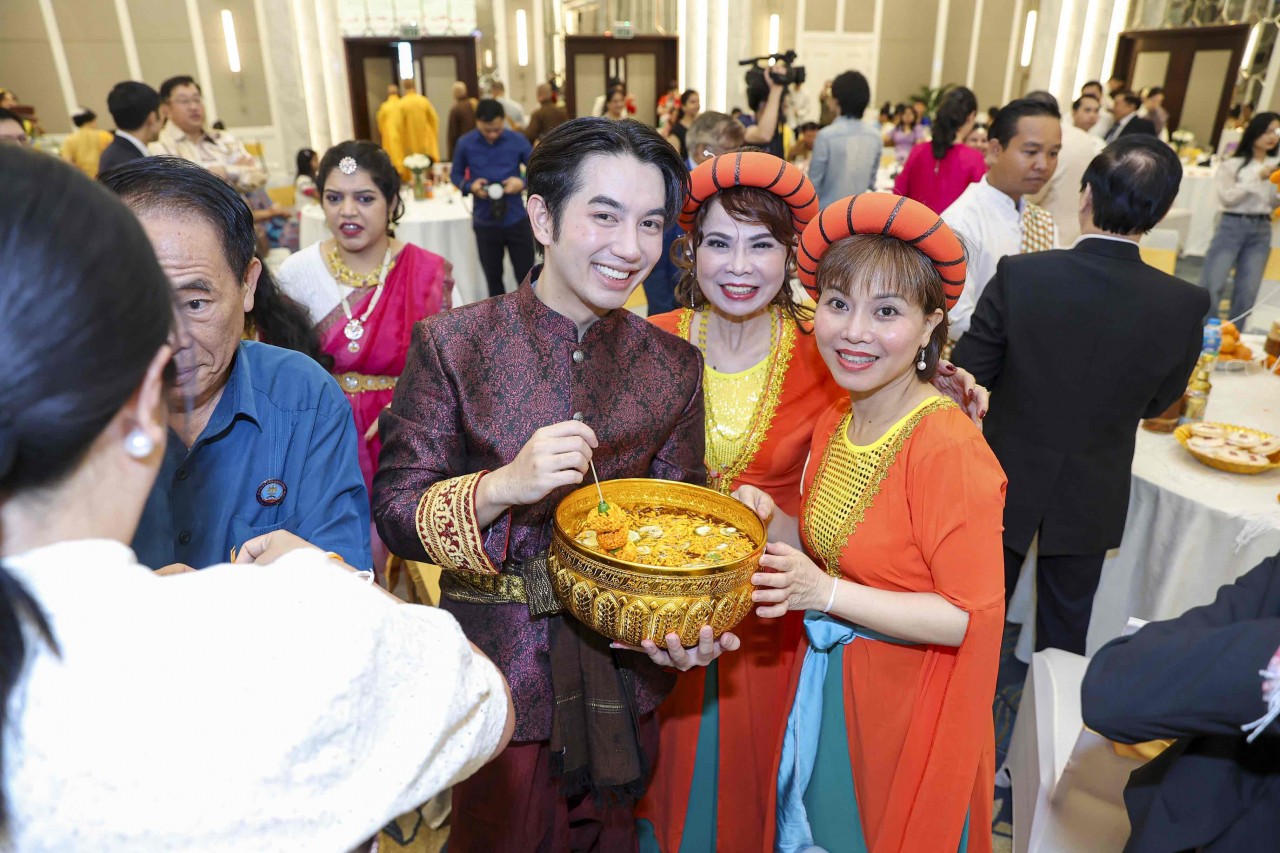Explore Five Traditional Tet Customs In Vietnam
Whether in ancient times or today, Tet is still the biggest traditional holiday in Vietnam. Not only is it a sacred moment marking the transition between the old year and the new, but Tet also reflects Vietnamese people’s outlook on life as well as the profound and unique customs and beliefs bearing the national culture.
Worshipping Kitchen Gods
The Land Genie and Kitchen Gods worshipping ritual is held on the 23rd day of the 12th lunar month, which falls on January 25 this year. It is also considered the start of the Lunar New Year (Tet) festival - the biggest and most important traditional holiday for Vietnamese.
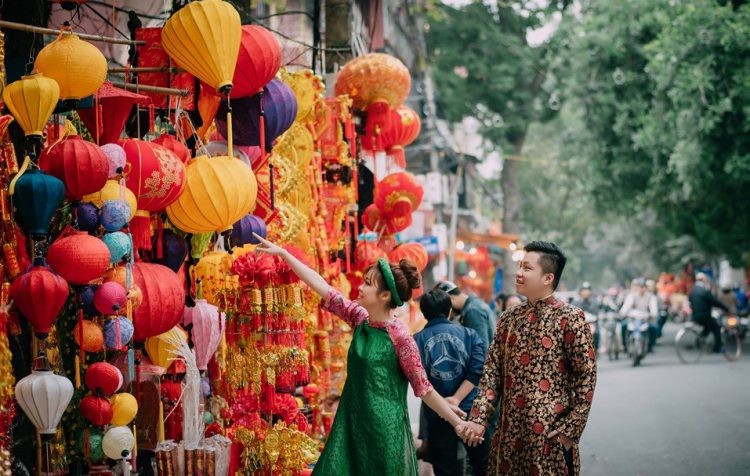 |
| Vietnamese people believe that the Land Genie and Kitchen Gods are decisive to the good or bad luck and blessings for their families. Photo: Vietnam Insider |
As the legend goes, “Ong Cong” (Land Genie) is the one in charge of land while “Ong Tao” (Kitchen Gods), consisting of two males and one female, are those who keep a watch over the kitchen affairs of a family. They take note of a family’s issues in a year and will ride Carps back to Heaven on the 23rd day of the 12th lunar month to report all the good and bad things of that family to the God of Heaven.
Ong Tao represents the prosperity and happiness of a family. Given this, Vietnamese people believe that the Land Genie and Kitchen Gods are decisive to the good or bad luck and blessings for their families.
Cleaning and decorating the house
On the days leading up to Tet, Vietnamese people often clean their houses, throwing away old things that are not used anymore and buying new ones with the meaning of wishing for a new year with all luck and abundance.
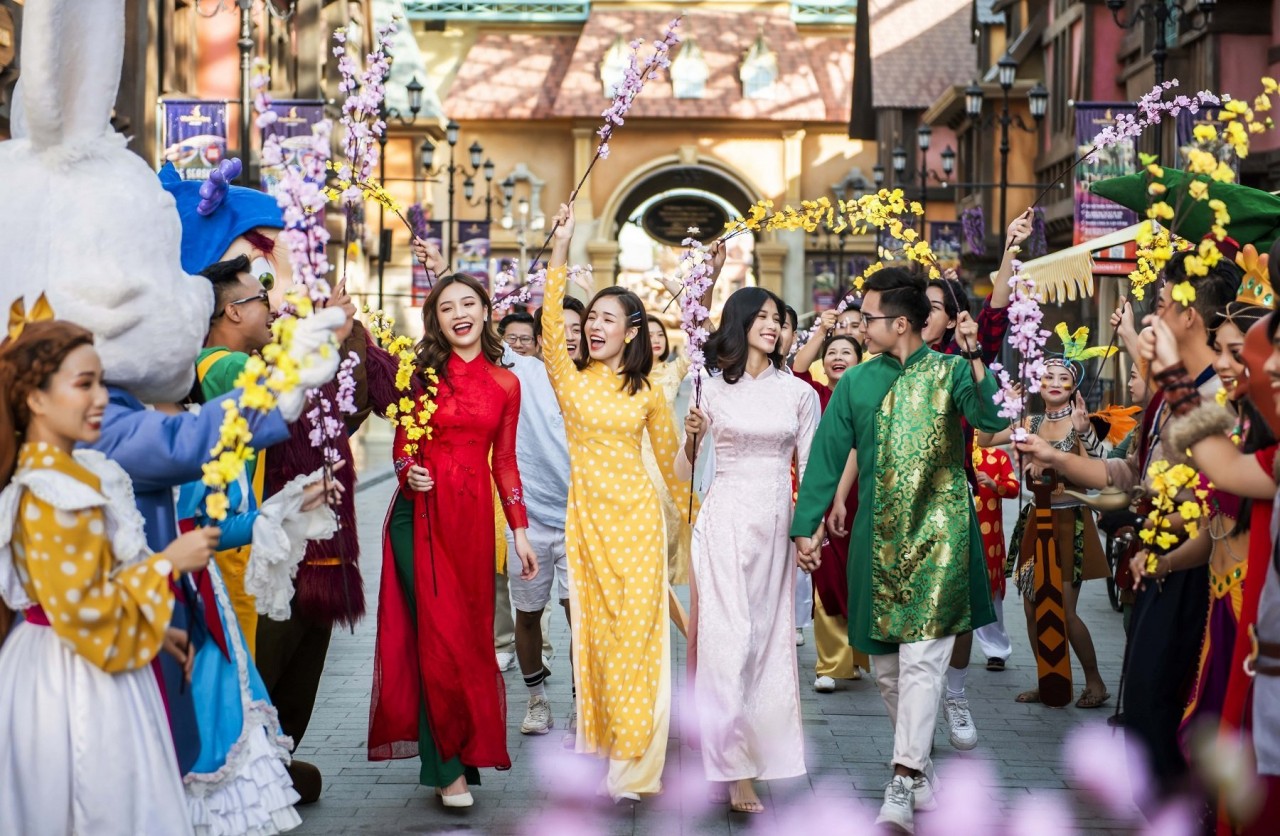 |
| People enjoy the Tet holiday. Photo: Vinwonders |
Tet holiday songs are played, and Vietnamese houses are adorned with various Tet holiday decorations to create a warm and joyful atmosphere. Some of the typical Vietnamese New Year decorations include red couplets, "cay neu" (a bamboo pole with various decorations to ward off evil spirits), and specific flowers associated with Tet, which create a festive ambiance.
Wrapping Chung Cake
One of the key Tet traditions for Vietnamese people is to wrap Banh Chung, a type of square glutinous rice cake, and Banh Tet, a round glutinous rice cake. These types of cakes are specially made for worshipping ancestors, or alternatively used as special gifts for relatives and guests. As family members make and consume the delicacies, they take time to sit together and recall stories from the past year.
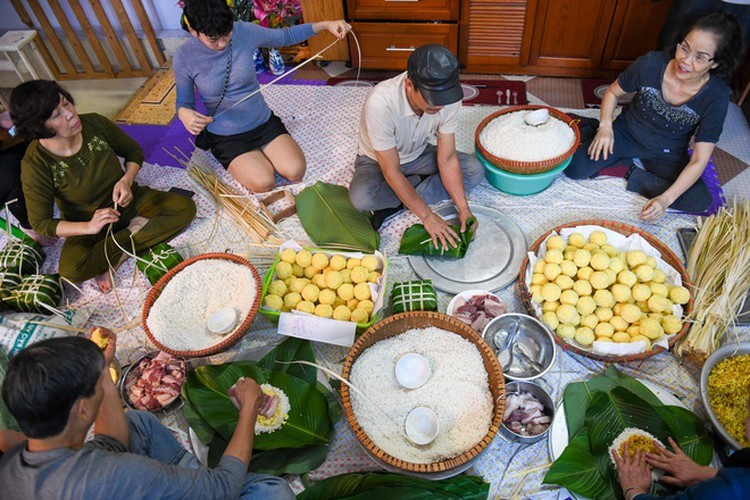 |
| Both Banh Chung and Banh Tet are square and cylinder sticky rice cakes which are indispensable for Tet celebrations. Photo: Vietnamnet |
Both Banh Chung and Banh Tet are square and cylinder sticky rice cakes which are indispensable for Tet celebrations. Spending several hours cooking Tet cakes is a custom that has developed among Vietnamese people over generations.
Giving children “Li Xi”
Giving children “Li xi”, also known as lucky money, is one of the most anticipated Tet customs, especially among local children. “Li xi” is a small amount of money put in a red envelope and given to children. It is believed that “li xi” can bring about good fortune, although it is certain that it will bring great happiness to the recipient.
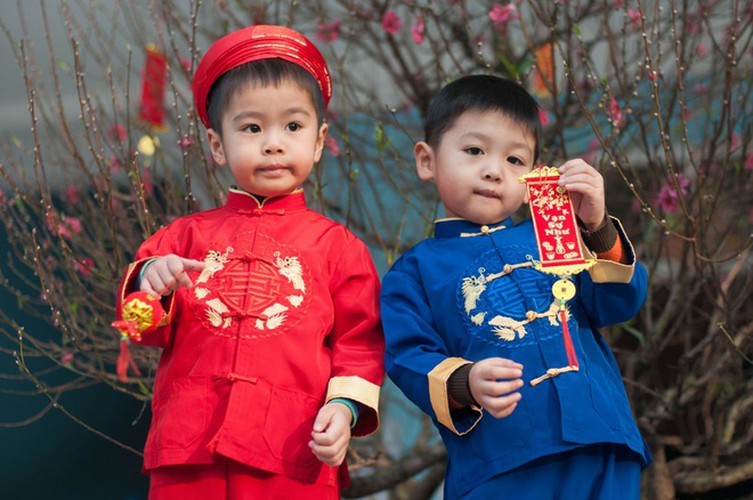 |
| “Li xi” is a small amount of money put in a red envelope and given to children. Photo: Vietnamnet |
“Li xi” is often given on the first three days of Tet, which is from 1st January to 3rd January on the Lunar calendar.
Arranging five fruit tray
Arranging a five-fruit tray during the Lunar New Year celebration is a long-standing tradition in Vietnam.
Among the numerous offerings that are required to decorate ancestral altars during the traditional New Year, a five-fruit tray is indispensable for each Vietnamese family. It is a symbol of the wholeheartedness of the present generation towards their ancestors.
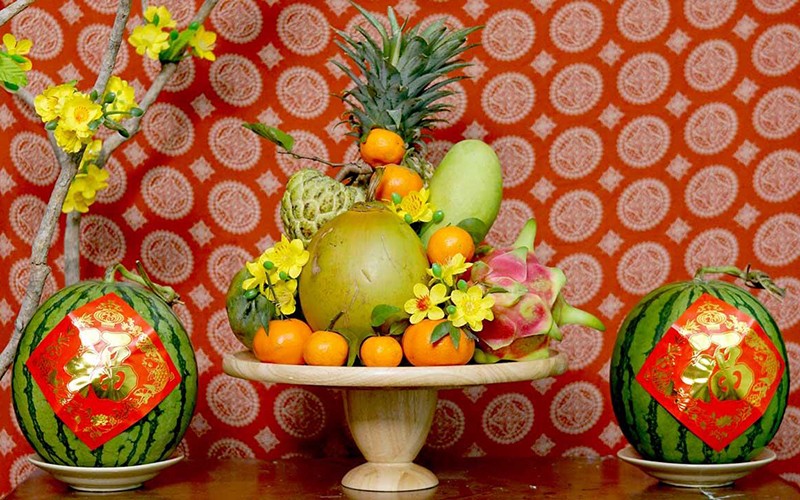 |
| Arranging a five-fruit tray during the Lunar New Year celebration is a long-standing tradition in Vietnam. Photo: tuoitre.vn |
The common five-fruit tray is usually composed of five types of fruits with different colors symbolizing the five elements - Metal, Wood, Water, Fire, and Earth.
The East Asian and Southeast Asian people believe that the number 5 symbolizes luck and good things. The number 5 also represents the five blessings that people usually wish to have in the new year - wealth, luxury, long life, health, and peace.
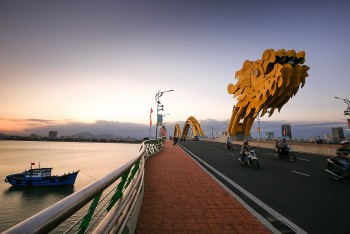 | Best Photo Ops to Celebrate the Year of the Dragon in Vietnam Dragon Bridge (Da Nang), Thuy Tien Lake Water Park (Thua Thien Hue), and Linh Quang Pagoda are the best tourist destinations with dragon images that ... |
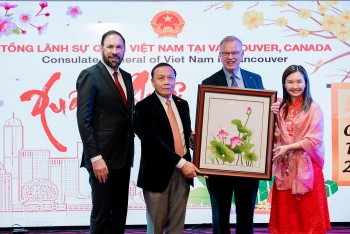 | Vietnamese Consul General Honored for Contributions to Vietnam-Canda Ties Senator Victor Oh, on behalf of the Senate of Canada and the Canada - Vietnam Friendship Parliamentary Group, has presented Vietnamese Consul General in Vancouver ... |
![[Photos] Lunar New Year Celebrations Across the World [Photos] Lunar New Year Celebrations Across the World](https://vietnamtimes.org.vn/stores/news_dataimages/2024/022024/10/01/thumbnail/f78221709c2141d2fd9a9fcb0c27208a.jpg?rt=20240210013617) | [Photos] Lunar New Year Celebrations Across the World Vietnam, China, Malaysia, and many communities around the world are immersing themselves in the cheerful and bustling atmosphere to welcome the New Year of the ... |
Recommended
 Handbook
Handbook
Vietnam Moves Up 8 Places In World Happiness Index
 Handbook
Handbook
Travelling Vietnam Through French Artist's Children Book
 Multimedia
Multimedia
Vietnamese Turmeric Fish among Best Asian Dishes: TasteAtlas
 Handbook
Handbook
From Lost to Found: German Tourist Thanks Vietnamese Police for Returning His Bag
Popular article
 Handbook
Handbook
Prediction and Resolution for the Disasters of Humanity
 Handbook
Handbook
16 French Films To Be Shown For Free During Tet Holiday In Vietnam
 Handbook
Handbook
Unique Cultural and Religious Activities to Welcome Year of the Snake
 Handbook
Handbook




